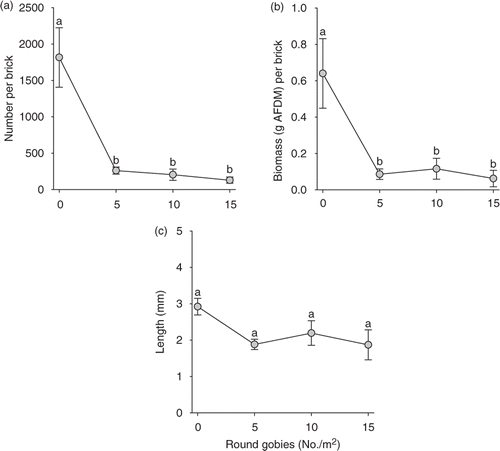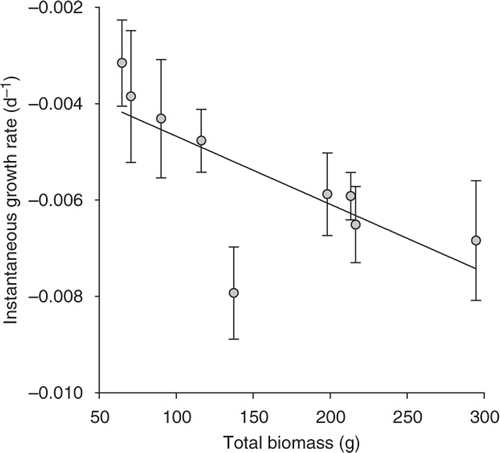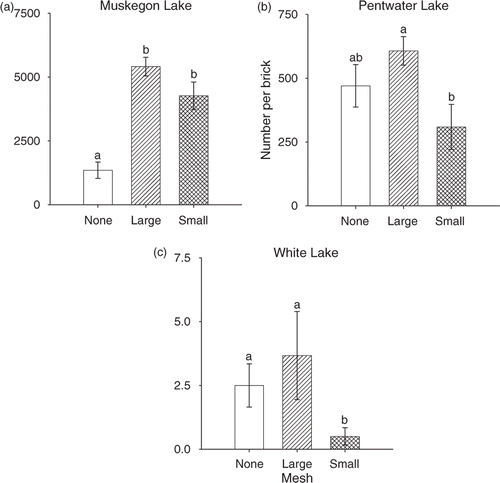Figures & data
Table 1. Site locations, lake surface area, water temperature, turbidity, Dreissena density and size, and round goby catch for the exclosure experiment. Temperature and turbidity (mean ± 1 SE) were measured during April (once), June (once in Kalamazoo and twice in other lakes), and September (once) 2005. Dreissena density (mean ± 1 SE, n = 3 bricks per lake) and size (mean and range) are based on bricks sampled at the beginning of the experiment. Round goby catch was in three fyke nets fished at each site during June 2005 (Cooper et al. Citation2007).
Table 2. Ecological interpretations of differences in Dreissena densities in the exclosure experiment. Treatment levels were no-mesh controls (N), 24-mm exclosures (L), and 6-mm exclosures (S). We assumed that S excluded all predators of Dreissena and L excluded all predators of Dreissena except the round goby (see Materials and methods section for further discussion).
Figure 1. Response of mean (a) number, (b) biomass, and (c) length of Dreissena to a gradient of round goby densities in enclosures. Error bars represent ± 1 SE. Means with different letters indicate significant differences (p < 0.05).

Figure 2. Relationship between mean instantaneous growth rates (±1 SE) of round gobies and initial biomass of round gobies stocked in an enclosure. Each point represents one cage.

Figure 3. Mean density (±1 SE) of Dreissena in (a) Muskegon, (b) Pentwater, and (c) White lakes. All predators had access to Dreissena in no-mesh (none) controls, whereas all predators were excluded from the 6-mm (small) exclosures. Only large predators were excluded from 24-mm (large) exclosures (i.e., round goby had access to Dreissena). Means with different letters indicate significant differences (p < 0.05). Bricks in Kalamazoo Lake (not shown) were not colonized by Dreissena.
